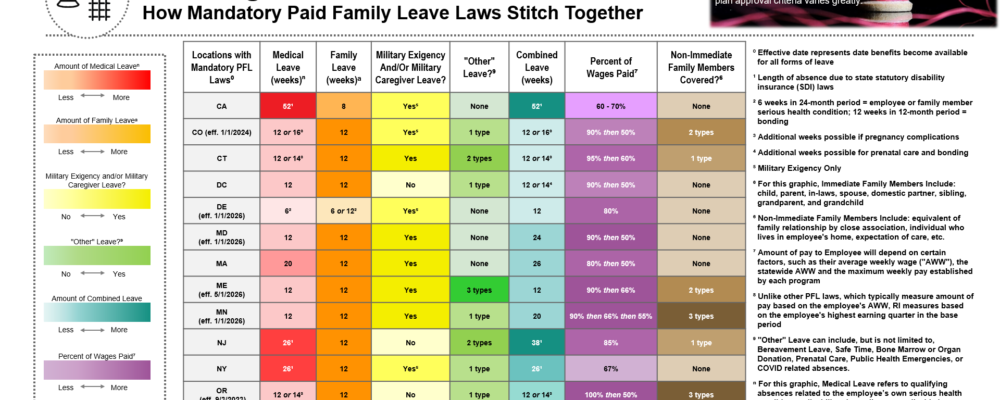On November 5, 2025, the Massachusetts Supreme Judicial Court will hear oral arguments in a closely-watched wrongful death case that could reshape the landscape for punitive damage awards in the Commonwealth, including in employment cases under Chapter 151B.
Background on Fontaine v. Philip Morris
In the underlying case, Fontaine v. Philip Morris USA Inc., Armand Fontaine brought a products liability suit against tobacco giant, Philip Morris and Demoulas Supermarkets on behalf of himself and his wife’s estate. Fontaine alleged his wife died at the age of 60 from lung cancer after smoking cigarettes since childhood. A Middlesex County jury awarded Mr. Fontaine $8 million in compensatory damages and a staggering $1 billion in punitive damages. The Superior Court trial judge remitted the punitive damages award to $56 million. Philip Morris appealed, and the SJC took up the appeal on its own initiative.
Issues Before the SJC
The SJC is considering whether to impose “safeguards” to prevent excessive punitive damages awards like the one in Fontaine, specifically: (1) whether a punitive damages award should be supported by clear and convincing evidence versus the current standard of by a preponderance of the evidence; and (2) whether the Due Process clause requires bifurcation of trials, such that punitive damages are awarded only after liability has been established. This issue is particularly important in the employment context because Massachusetts anti-discrimination laws do not impose the same limits on punitive damages as some of their federal counterparts. For example, both Title VII and the Americans with Disabilities Act cap punitive damages at $50,000-$300,000, depending on employer size.[1]
Potential Impact on Employers
These potential punitive damages safeguards could be highly beneficial to Massachusetts employers. The Massachusetts’ anti-discrimination laws – Chapter 151B – allow punitive damages without any statutory cap, this giving juries broad discretion. This makes Massachusetts an outlier compared to federal law and many states. Recent years have seen an increase in so-called ‘nuclear verdicts’ – punitive damages awards that are disproportionate to actual harm. While the reasons for this trend toward large punitive damage awards are varied, these safeguards could reduce the likelihood of such extreme outcomes.
Comparison to Federal and Other State Standards
Massachusetts is currently among the minority of states permitting plaintiffs to prove punitive damages by the lower preponderance of the evidence standard. Thirty-two states use the clear and convincing standard for punitive damages.[2] The Maryland Supreme Court, for example, held that “a heightened standard is appropriate in the assessment of punitive damages because of their penal nature and potential for debilitating harm.” [3] Additionally, seventeen other states already require bifurcated trials for punitive damage claims.[4] Indeed, the Florida Supreme Court found that defendants “who are forced to litigate the issue of liability and punitive damages in the same proceedings are at a severe disadvantage” because prejudicial “evidence of a defendant’s net worth” are introduced before a jury determines liability.[5]
There is also a growing body of federal case law on this issue. The United States Supreme Court has found that punitive damages must be reasonably calculated, and juries need guidance on such calculations to avoid extreme results.[6] In BMW of North America Inc. v. Gore, the Supreme Court expressly held that the Due Process clause prohibits states from imposing grossly excessive, unanticipated punishments on defendants. It established a three-part test for evaluating punitive damages, which includes an assessment of: (1) the malicious nature of the conduct; (2) the ratio of punitive damages to compensatory damages; and (3) the size of the award compared to statutory sanctions for similar conduct. In a subsequent case, the Supreme Court then struck down a 145:1 ratio of punitive to compensatory damages, reasoning that the ratio should not exceed single digits to a significant degree. [7] The Massachusetts Appeals Court applied the BMW framework in its 2019 decision in Charles v. Leo, et al., affirming an 11:1 ratio of punitive to compensatory damages.
Key Takeaways for Employers
Ultimately, the SJC’s forthcoming decision could mark a significant recalibration of the punitive damages framework in Massachusetts. The SJC’s decision in Fontaine could bring Massachusetts in line with the majority of states by heightening the standard for punitive damages and requiring bifurcated proceedings. Employers should monitor the outcome closely – especially those defending discrimination, retaliation, and wrongful termination claims, where punitive damages can often dwarf compensatory damages. Employers should consult with counsel about potential implications for ongoing litigation strategies, jury instructions, and settlement evaluations.
[1] Note, however, that the Massachusetts age discrimination law, Mass. Gen. L. Ann. ch. 151B, § 9, is similar to its federal counterpart, the Age Discrimination in Employment Act, 29 U.S. Code Ann. § 633a, in that both allow a successful Plaintiff to recover liquidated damages rather than punitive damages.
[2] Ala. Code § 6-11-20; Co. Rev. Stat. Ann. § 13-25-127; Cal. Civ. Code §3294; Fl. Stat. Ann. § 768.72; Ga. Code Ann. § 51-12-5.1; Ind. Code § 34-51-3-2; Kan. Stat. Ann. § 60-3701; Minn. Stat. 549.20; Miss. Code Ann. § 11-1-65; N.C. Gen. Stat. Ann. § 1D-15; Okla. Stat. Ann. tit. 23, § 9.1; Or. Rev. Stat. § 31.725; S.D. Codified Laws § 21-1-4.1; Tex. Civ. Prac. & Rem. Code § 41.003; See Linthicum v. Nationwide Life Ins. Co., 723 P.2d 675, 681 (Ariz. 1986); Jonathan Woodner Co. v. Breeden, 665 A.2d 929, 932 (D.C. 1995); Masaki v. General Motors Corp., 780 P.2d 566, 575 (Haw. 1989), abrogated on other grounds by Guieb v. Guieb, 571 P.3d 382 (Haw. 2025); Tuttle v. Raymond, 494 A.2d 1353, 1363 (Me. 1985); Owens-Illinois, Inc. v. Zenobia, 601 A.2d 633, 657(Md. 1992); Hodges v. S.C. Toof & Co., 833 S.W.2d 896, 901 (Tenn. 1992); Wangen v. Ford Motor Co., 294 N.W.2d 437, 458 & n.23 (Wis. 1980).; Travelers Indemnity Co. v. Armstrong, 442 N.E.2d 349, 358 (Ind. 1982).
[3] Owens-Illinois, Inc. v. Zenobia, 601 A.2d 633, 657 (Md. 1992).
[4] Alaska Stat. Ann. § 09.17.020; Ark. Code Ann. § 16-55-211; Ga. Code Ann. § 51-12-5.1; Kan. Stat. Ann. § 60-3701; Minn. Stat. § 549.20; Miss. Code Ann. § 11-1-65; Mo. Rev. Stat. § 510.263; Mont. Code Ann. § 27-1-221; Nev. Rev. Stat. Ann. § 42.005; N.J. Stat. Ann. § 2A:15-5.13(b); N.C. Gen. Stat. § 1D-30; S.C. Code Ann. § 15-32-520; Tenn. Code Ann. § 29-39-104(a); Tex. Civ. Prac. & Rem. Code § 41.009; W. Va. Code § 55-7-29(c). Texas initially instituted this procedure by judicial decision, see Transportation Ins. Co. v. Moriel, 879 S.W.2d 10, 30 (Tex. 1994), and then later by statute, see Tex. Civ. Prac. & Rem. Code § 41.009.
[5] W.R. Grace & Co.—Connecticut v. Waters, 638 So.2d 502, 506 (Fla. 1994).
[6] TXO Production Corp v. Alliance Resources Corp, 509 U.S. 443 (1993).
[7] 538 U.S. 408, 425 (2003)
“With approximately 900 lawyers across 17 offices, Seyfarth Shaw LLP provides advisory, litigation, and transactional legal services to clients worldwide.”
Please visit the firm link to site






